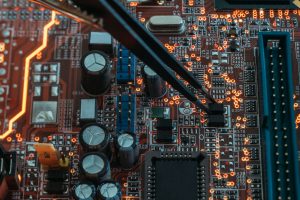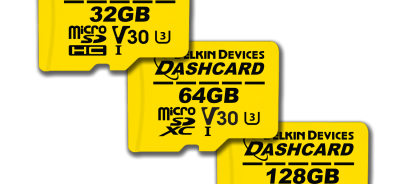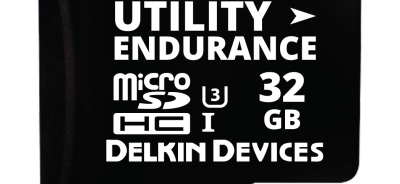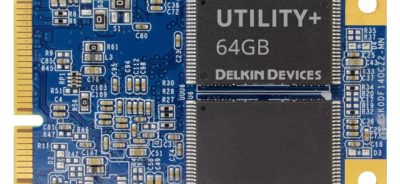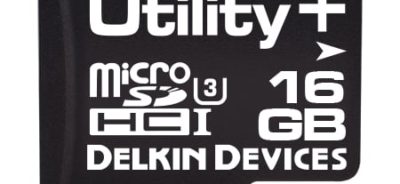Take a Closer Look at Embedded Memory Systems
Embedded memory systems do excellent behind-the-scenes work, but at a conscious level, it’s not always clear what exactly is going on—especially if you’re just breaking into the engineering world. From computing systems to memory subsystems and much more, embedded memory systems can be quite complex.
To understand embedded memory systems, however, you’ll need to first have a firm grasp of their purpose. In essence, embedded memory systems allow the processors of embedded devices to perform at their highest capacity with a low risk of failure.
Delkin Devices provides state-of-the-art, industrial-grade flash memory and storage SSDs for industries across the spectrum, from gaming and automotive to aerospace and biotech, and much more. Our USA-design flash storage solutions are a popular choice for applications in all industries because of their extreme dependability and durability, along with extensive customizable options and world-class support from our expert customer applications team.
Delkin’s cutting-edge embedded memory systems are designed to fit the unique needs of each client, with durability, reliability, and long lifespans at the forefront of our flash storage features. Delkin’s customer applications team will work with you to choose the best components for your Original Equipment Manufacturer (OEM) systems.
About Embedded Memory Systems
Embedded memory systems can contain either volatile or non-volatile hardware components. Those that have volatile hardware components consist of temporary storage spaces. Meanwhile, embedded memories with non-volatile hardware consist of persistent storage. Despite their differences, both store information to be used as bytes for binary code and group data. Standard bytes contain 8 bits of information data, while double bytes feature 16 bits and quad bytes feature 32 bits.
The embedded operating system controls the embedded memory. However, it’s not the only aspect controlling the memory system. Software systems play a role, too, by triggering the Central Processing Unit (CPU), also known as the processor, to transmit electricity through an address line to pinpoint where the needed data is stored on the memory chip. Once established, that same electrical pulse travels through the address line to ultimately reach a transistor, where the electricity charges a capacitor to a 1 bit or a 0 bit, meaning on or off, respectively.
Random Access Memory (RAM), meanwhile, uses a volatile kind of memory that is only available while the device is turned on. When embedded systems were still a novelty in the technological world, Read-Only Memory (ROM) is what powered both applications and memory systems. These days, you can use both RAM and ROM for byte information units depending on the exigencies of your application.
Regardless of RAM’s rapidly growing use, non-volatile memory is still the favorable option when it comes to data retention. In embedded systems, large containers of bytes organized by sectors or underlying groups—especially when in servers or personal computers—have a blanket necessity for non-volatile or persistent storage. This is because space comes at a premium and low power usage is vital. It’s easy to achieve this by using removable media sources like USB drives, SD cards, CF cards, or by designing an embedded non-removable source in and of itself. These embedded systems must be able to access the data without compromising its stability either with or without a power source.
Embedded systems feature small form factors, so physical space is always limited, making it harder to choose an effective memory option. For this reason, many RTOS and OS embedded systems use blocks of 512 or 4,192 Kbytes on their small form factor devices. This is a stark difference when compared to fixed-disk drives (like HDDs) or solid state drives (SSDs), which don’t require small memory drives or low power forces.
About Volatile Memory
Volatile memory, also known as Random Access Memory (RAM), processes instructions directly from the CPU, including the instructions and data of programs running in real time. Volatile memory needs power in order to maintain information and function properly. A lack of power, or even a power interruption, will cause RAM memory to experience data loss. Thanks to modernized embedded CPUs, volatile memory is now able to process 32-bit and even 64-bit computing, as opposed to only 8 bits in past models. RAM hardware can be accessed in the chips in the package substrate, which holds I/O ports along with the CPU. This is a system on chip (SOC), and it is typically found in smaller devices, such as drones, which feature limited space on their boards.
About Non-Volatile Memory
In 1984, Toshiba employee Dr. Fujio Masuoka invented flash RAM, inspired by his colleague Shoji Ariizumi who assimilated the process of data erasure from cells to the flash of a camera.
Unlike its volatile counterpart, non-volatile memory (NVM), or non-volatile storage, can retain data even in the eventual loss of power. Rotating disks were once the favored option for this reliable storage solution. However, flash storage has since taken its place as the top choice to save data as it works faster and retains more, and therefore it is viable for long-term usage. Non-volatile flash memory has revolutionized the technological field with unlimited potential for consumer devices and beyond. It can be used for everything from cell phones and digital cameras to rugged industrial applications, including sophisticated military machinery and state-of-the-art medical apparatuses.
Flash memory was originally an electrically erasable, programmable read-only memory (EEPROM) device. These devices contain grids and rows connected to transistors and separated by a layer of oxide between each. Transistors that are connected to each other feature a cell value of one, while those disconnected hold a cell value of zero. For a cell value to transition from zero to one, electrons must move through the cell barrier in order to change the charge of the cell in a procedure called field emission, or the Fowler-Nordheim tunneling process. Upon the completion of the procedure, when all power is removed, the cell will store the final setting, which would be programmed or erased.
Flash memory is an excellent option for small form factors with permanent data storage needs. Its versatility allows for permanent attachment to the board or removable options such as USB drives that can hold non-resident memory while remaining reliable and stable with zero moving parts. To move forward with the most appropriate memory solution for your unique application, you must consider both the pros and cons of flash memory, however. Among the best benefits of flash include:
- A compact size that still results in high performance, reliability, and significant storage space
- Flash memory features high speed with low power consumption
- A lack of rotating media and physical disk head movement that heats devices and affects I/O performance
No storage solution is perfect, though, and even flash includes some downfalls. Some examples of potential challenges presented by flash memory include:
- Cells are prone to bit disturbance which can only be resolved with error detection and algorithms engineered to correct the issues.
- Without a system of protection, a power loss can result in incomplete writes and permanent data erasure.
- Contrasting the last point, if data erasure is the goal, flash memory may make it hard to completely remove all data from a device.
- Hardware wear and tear can occur. This is more common with smaller form factors.
- The fast evolution of flash technology affects OEM production cycles, causing some procedures to be obsolete and resulting in potential data loss or poor performance.
- Chip fabrication is not consistent across the board, and so timing, performance, and quality can be compromised, even among the same manufacturer and parts number.
Types of Flash Memory
Not all flash memory features the same type of function. There exist two main types of this storage solution—NOR and NAND. NOR was created to replace RAM and other non-volatile memory storage options with a revolutionary ability to read individual bytes, thanks to complete sets of address lines. NOR is typically used for image storage in OS systems, system configuration information, and removable CF cards. This technology can perform at as fast a level as Dynamic Random Access Memory (DRAM) which therefore allows programs to execute directly in place, resulting in a seamless experience. However, there is one downfall to NOR, which is that it is not simple to erase data. Because data erasure occurs so slowly, it’s advised to perform regular erasure operations to avoid an accumulation and challenging deletion process therein.
NAND differs from NOR in that it only reads, writes, and erases data in blocks instead of individual bytes. The serial interface is a viable replacement for hard drives, but it lacks the capacity to fit in ROM in the way that its counterpart, NOR, can. Regardless, its smaller footprint and favorable price point have placed it at the forefront of flash technology. It can be used as both removable flash storage or as a resident form in an application. Manufacturers seeking high-performing flash storage solutions with fast erasure potentials at a decent budget should consider NAND over NOR.
NAND features sophisticated data organization at a cellular level. Its varied organizational options include:
- Single-level cell (SLC) which stores one bit of information per cell
- Multi-level cell (MLC) which stores two bits per cell
- Triple-level cell (TLC) storing three bits or more per cell
High data storage in cells may seem useful for applications while also being more affordable. However, it comes at a cost. Cells that hold more bits operate at a slower pace and are more prone to errors. This can be avoided with minimal write operations and refined error-correcting codes.
With NAND, block performance, including reads, writes, and erasures, are all commanded by the controller, which connects the flash memory operations to the host computer. Quality designs will feature a controller that flawlessly performs these tasks, while the driver software controls the remaining activities of the application. This ensures the even and progressive wear of the flash storage solution while seamlessly restoring bad blocks.
NAND flash memory also includes controllers built directly into the NAND flash’s physical device which further boosts efficiency and dependability. This type of flash NAND is called managed NAND. Of course, with cutting-edge technology comes a higher price tag, and managed NAND results are more costly than the traditional non-managed kind.
These days, engineers are increasingly choosing managed NAND as a resident form and Embedded Multi-Media Card (eMMC), replacing older models of flash memory with controllers. Despite its technological advancements, eMMC for NAND memory can often result in slow read times, which creates difficulties particularly when it comes to random reads.
Ultimately, there is no one particular flash memory option that’s better than the other. Different applications will require their own unique set of demands, and so what works for some will not be the most efficient for others. Prioritizing the usage of memory is vital when selecting a flash storage solution for a device. Other features that should be considered in a flash memory selection include its price point, life cycle length, technological quality, and data storage capacity. Delkin assists all clients with individualized service in creating a customized flash storage solution that meets each application’s particular exigencies.
How to Decode Flash Memory Interface
Flash memory interface features a streamlined design that’s easy for both developers and manufacturers to understand. Common Flash Memory Interface (CFI), as it’s called, contains an open interface that efficiently connects the address bus, data, and flash for a universal template that facilitates easy use. The Joint Electron Device Engineering Council (JDEC) endorses the CFI via a non-volatile memory subcommittee responsible for ensuring that parts from varying vendors all comply with interface standards.
Small embedded systems consist of similar physical, electrical, and common interface standards. However, one must examine the small embedded board data sheets to determine the level of persistent storage on the board. Occasionally, boards feature both resident and removable storage for optimal usage.
How to Decode Flash Memory Interface
The flash memory interface features a streamlined design that’s easy for both developers and manufacturers to understand. Common Flash Memory Interface (CFI), as it’s called, contains an open interface that efficiently connects the address bus, data, and flash for a universal template that facilitates easy use. The Joint Electron Device Engineering Council (JDEC) endorses the CFI via a non-volatile memory subcommittee responsible for ensuring that parts from varying vendors all comply with interface standards.
Small embedded systems also feature similar physical, electrical, and common interface standards. However, one must examine the small embedded board data sheets to determine the level of persistent storage on the board. Occasionally, boards feature both resident and removable storage for optimal usage.
System Software Operations
Reliable hardware is only half the package when it comes to flash storage. When persistent flash memory is the primary goal for manufacturers, efficient system software that can power operations is needed. To achieve this, there must exist a software data storage stack with connected software parts in the storage solution. The software will then separate each different service so that apps can translate file systems to block requests. This process mirrors that of the flash hardware in which hard drives are block based. Thanks to this process, file systems and block drivers can replace the components included in the embedded OS system through data stack storage that produces a resilient, robust, and reliable product.
As previously mentioned, flash memory drivers read, write, and erase data at an efficient and dependable capacity. This desirable function can be attained through wear-leveling algorithms that manage the wear in memory devices at a steady pace to prevent shortened life cycles. Wear-leveling algorithms achieve this by limiting the same blocks to be written repeatedly. In the case of NAND memory, where blocks are used in their entirety during operations, blocks need to be replaced routinely. If the blocks in flash memory were to wear out, they would significantly inhibit its performance and degrade its life cycle.
In addition to wear-leveling algorithms, the integrity and performance of NAND flash memory are also protected by Bad Block Management (BBM) that processes write errors and failures in the software. When a problem is detected, the BBM will reroute the block so performance can continue seamlessly.
About the Life of Data
The data in flash memory starts up in what is known as the boot process, pulling a boot image including the drivers, apps, and other components of the system, and loading it into the RAM. From there, the volatile memory accesses the flash memory data to make the non-volatile memory available.
Once turned on, flash memory goes through a series of operations to perform its necessary tasks, like file opening, file system operations, and the reading, writing, and erasure of data. It is becoming more possible for data collection to happen on local embedded devices for data integrity and security between connected devices.
During a system shutdown, I/O requests need to be completed to ensure no volatile data is lost. For added security, systems should also be equipped to handle abrupt power losses without compromising data.
Advanced embedded memory solutions can be challenging to understand, and even more so to select for your application. Delkin Devices provides innovative solutions for commercial and industrial-grade applications designed and tested to fit your unique needs. Contact our customer support team to discover the right rugged flash storage solution for you.
ORDER DELKIN INDUSTRIAL FLASH STORAGE TODAY through our distribution partners:
For Europe Contact Our Partner Farnell
 Login
Login Register
Register


